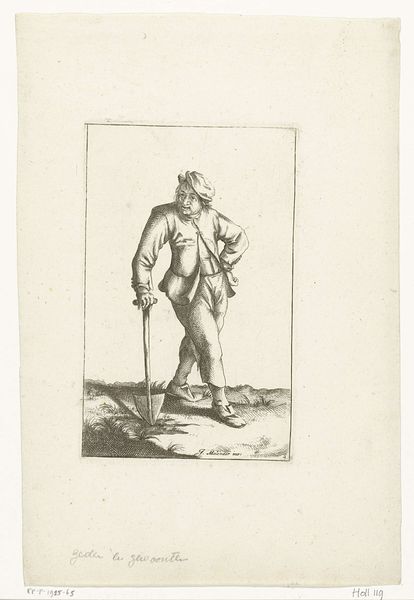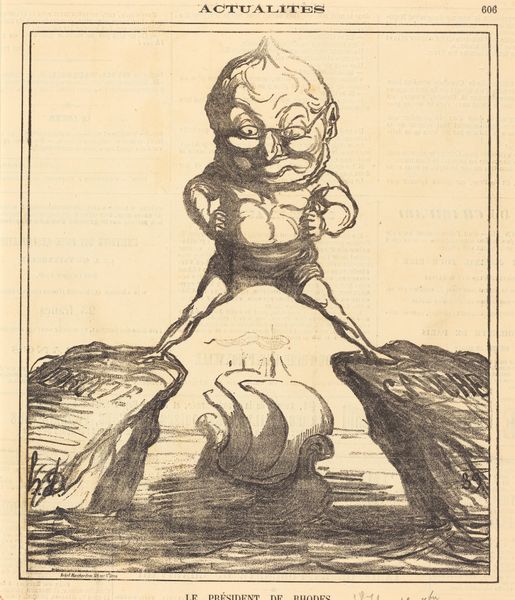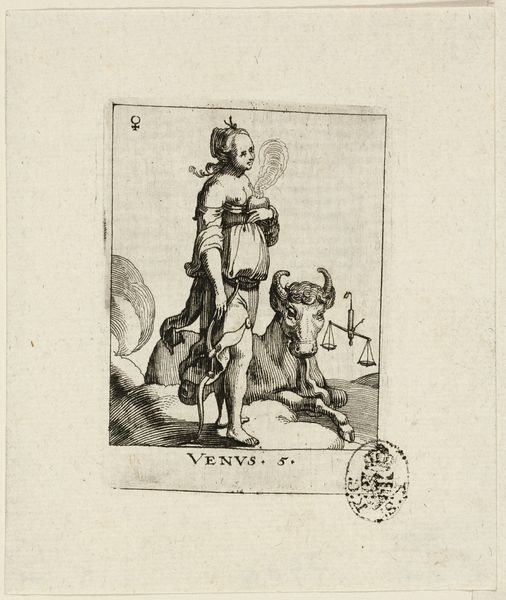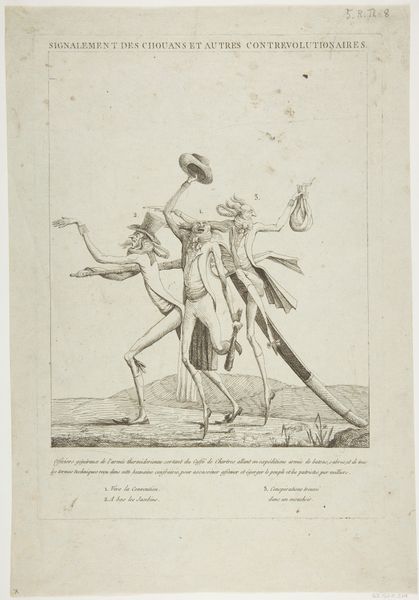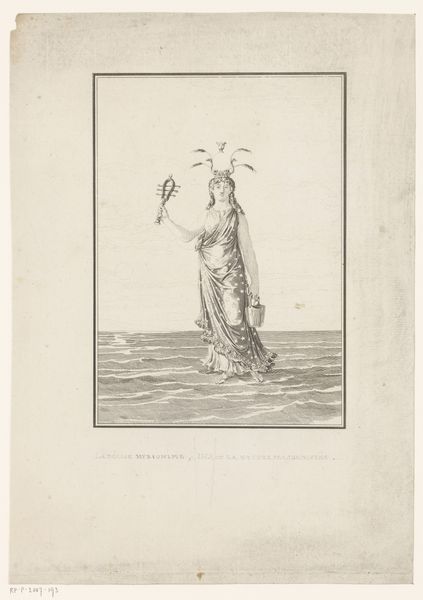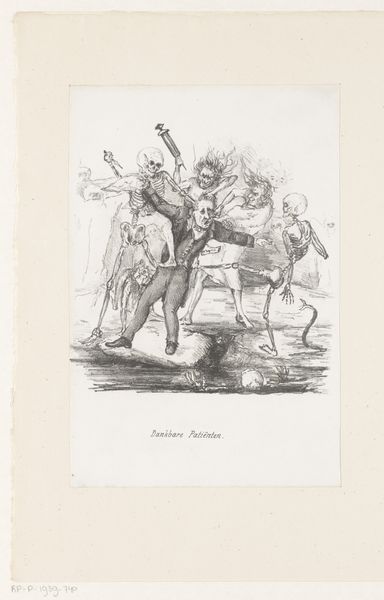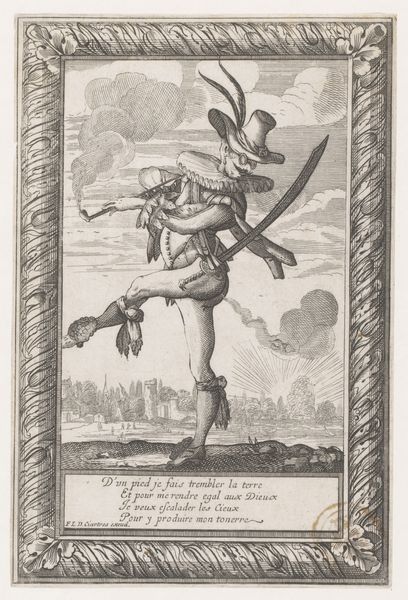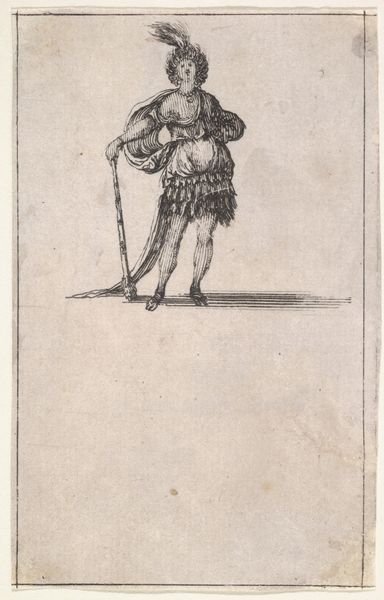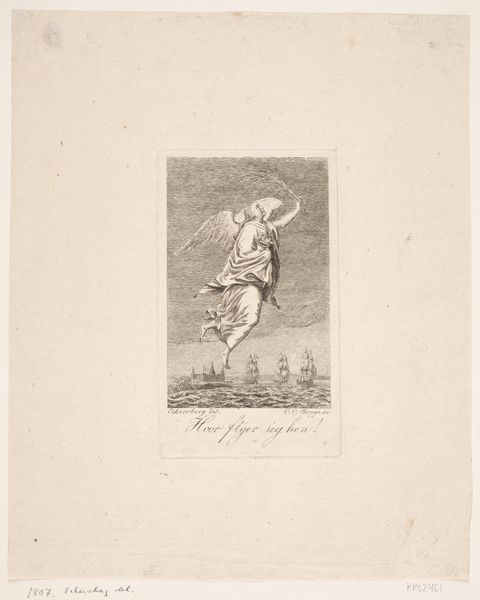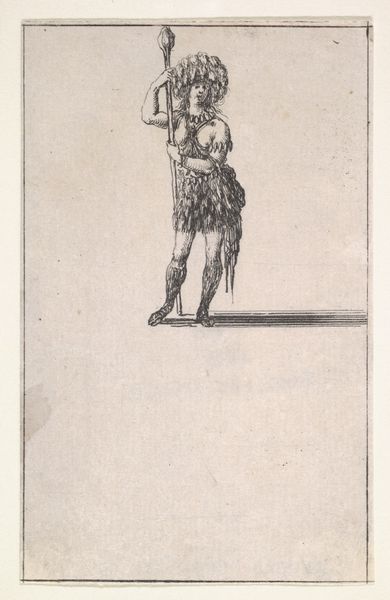
drawing, print, engraving
#
drawing
# print
#
romanticism
#
history-painting
#
engraving
Dimensions: Sheet: 10 13/16 x 8 9/16 in. (27.5 x 21.8 cm) Image: 7 15/16 x 5 11/16 in. (20.2 x 14.4 cm)
Copyright: Public Domain
Editor: This is "Le Grand Opéra," an engraving by Eugène Delacroix from 1821, housed at the Metropolitan Museum. I'm immediately struck by how satirical it feels – there’s this oversized figure on stilts, juxtaposed with a much smaller man balanced precariously on a barrel. What’s your take on this rather unusual piece? Curator: It is biting! Delacroix here engages in a form of visual critique quite common in Romantic art. Consider the historical context: post-Napoleonic France. The "Grand Opéra" becomes a metaphor for societal spectacle, perhaps commenting on the restored monarchy's attempts at grand displays masking underlying instability. Editor: So, the oversized figure isn't just some random giant? Curator: I see the stilted figure as an embodiment of performative power. Who controls access to this theater? Who profits from the show? The little character atop the barrel adds another layer – is it the audience, teetering on the edge, or another player forced into a ridiculous position? Consider the actual building of the Opéra and who funded that extravagant construction project. Editor: It's making me rethink how I view artistic choices - I tend to analyze how an image looks rather than why it was made in the first place. Curator: Exactly! The image serves a political function; Delacroix weaponized art as a means of social commentary. These types of critical statements against governments often appeared in printed material at the time. Editor: So much more going on than meets the eye. It's easy to focus on how 'rough' it looks for an engraving, but I see now that the technique plays a part in the overall message about politics, economics and institutions. Curator: And hopefully inspires questions! Considering not just "what is it?" but "what does it *do*?".
Comments
No comments
Be the first to comment and join the conversation on the ultimate creative platform.
